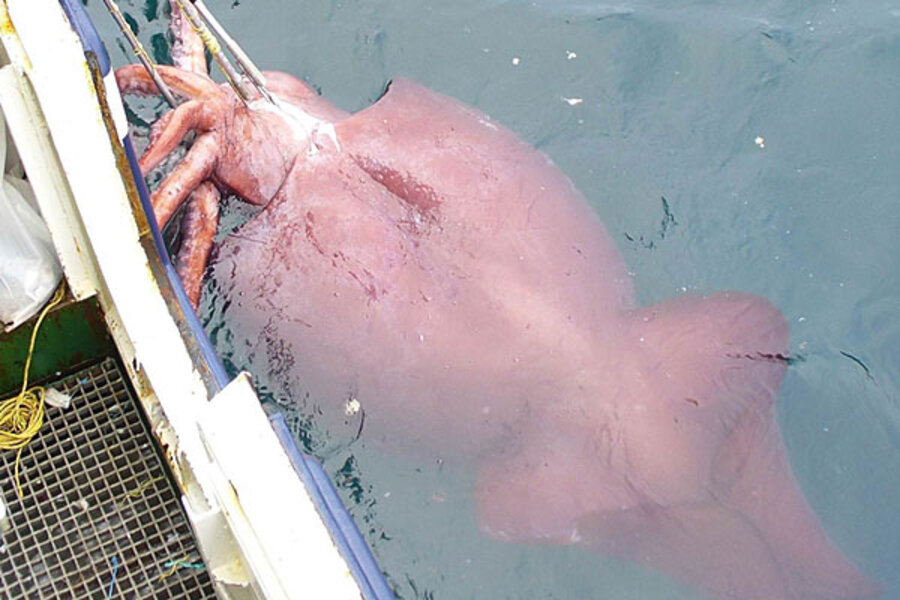Scientists unravel mystery of humongous squid eyeballs
Loading...
The basketball-sized eyeballs of the colossal squid are good for more than just staring down Captain Nemo. A new study suggests that they evolved to keep a lookout for sperm whales.
Despite being the largest known invertebrate, the colossal squid, which lives 2,000 feet below the surface of the Antarctic Ocean, has long eluded scientific observation. Until 1981, the only evidence of the giant cephalopod's existence could be found in the stomachs of what is thought to be its chief predator, the sperm whale. Since then, four complete specimens have been captured, the largest being hauled aboard by a New Zealand fishing boat in 2007.
This squid, which measured over 30 feet and weighed half a ton, was frozen, thawed and examined by Dan-Eric Nilsson, a marine vision expert at the University of Lund in Sweden. He confirmed that the squid's eyeballs, which measured 11 inches across, were the largest of any known animal.
Indeed, they were so big that they presented a puzzle. Other squids had eyes that were much smaller in proportion to the rest of their bodies, and no other animal, regardless of its size, had eyes that were even close to those of the colossal squid, and its slightly smaller cousin, the giant squid. The eyes of swordfish and whales, for instance, tend to top out at about 3.5 inches in diameter.
"You can find everything up to the size of an orange, which are in large swordfish," Nilsson told BBC News's Richard Black. "So you find every small size, then there's a huge gap, then there are these two species where the eye is three times as big – even though squid are not the largest animals."
Bigger eyes tend to do a better job of detecting light, but in the ocean there are diminishing returns once eyes reach a certain size. Once you get to about the size of an orange, bigger eyes seem to confer no benefit.
Plus, as Nilsson points out, large eyes are metabolically expensive to maintain. "Walking flies spend about 20 percent of their electricity bill on their eyes, so to speak, just running the neurons,” he said in an interview with Wired. “We don’t know what the costs are for giant squid, but they could cause some significant drag. They are just these massive things."
So why the huge peepers? By measuring the squid's eyes' components and gathering data on the clarity of the waters it inhabited, Nilsson's team concluded that the colossal squid is extremely farsighted; it was lousy at examining objects up close, but could see underwater about the length of a football field, or "freakishly long distances," in the words of a Duke University biologist who collaborated with Nilsson.
Just as important, the eyes' large diameter also gives the squids' an ability to detect tiny changes in contrast.
These abilities are not, by themselves, enough to spot an incoming sperm whale. But they do help detect glowing plankton and other tiny bioluminescent organisms that sparkle as they are jostled in the whale's wake.
The faint pinpoints of light can give the squid just enough advance warning to avoid becoming the whale's lunch. In other words, the squids' extraordinarily large eyeballs are the result of an arms race against another extraordinary long-distance detection mechanism: sonar.
Nilsson's teams' findings appear in the March 15 issue of Current Biology.






